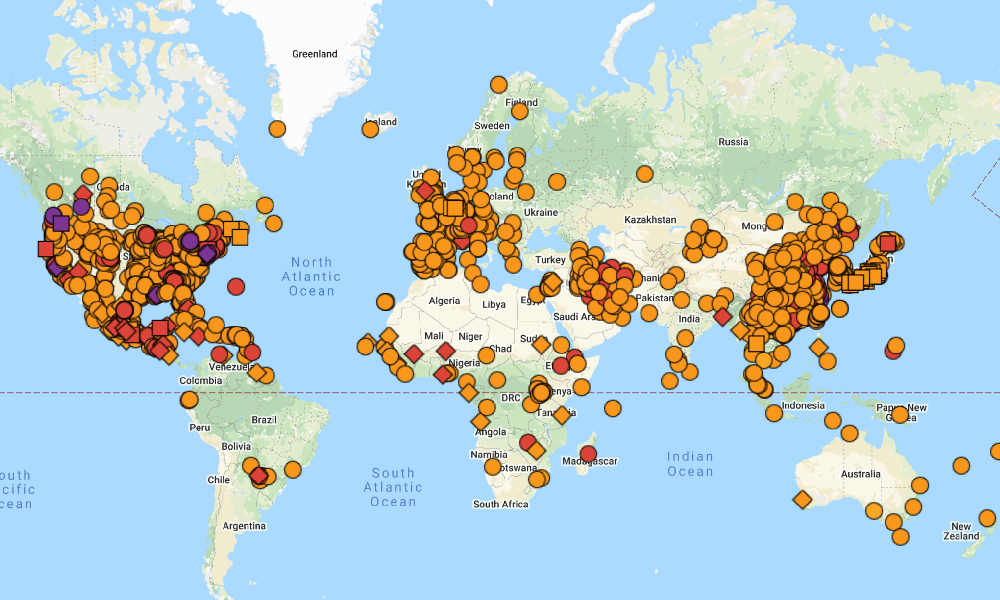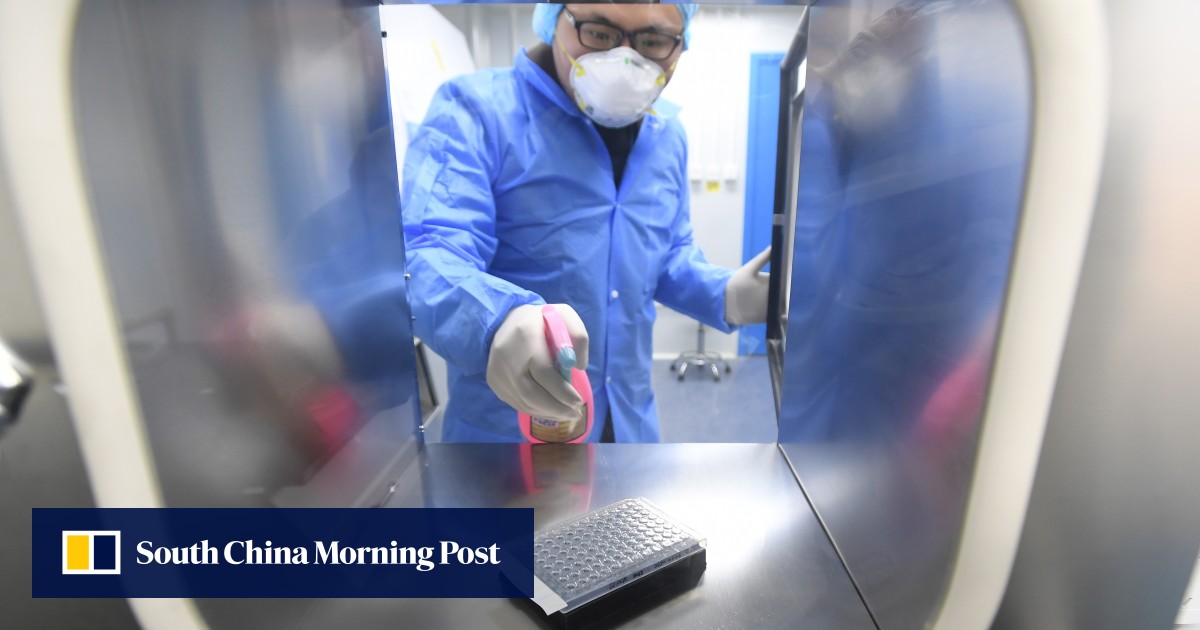marsh
On TB every waking moment
(Still at Premiere)
You Can Catch The Coronavirus More Than Once, And The 2nd Time May Be Deadlier Dr Chris Martenson (Pathology, Investment)
I hit Sam's, Wally and Aldi's in SW Va today, and all were good. Rice had been down, was fully stocked. Beans at Wally were restocked. La la la. You just look at people and know their train is about to derail.Our Sam's had holes also in the rice and beans. Some canned foods. I got strange looks for buying all that cheap Vodka but I got 9 people who need their elderberry. Hubby and son both work in the hospital.

Project C.U.R.E. sends shipments to China: Centennial organization, its partners send suits, masks to help with novel coronavirus efforts in Nanjing
The rapidly changing situation around the novel coronavirus spread is something Project C.U.R.E. and its partners have been monitoring closely, and the Centennial-based organization has sent two …centennialcitizen.net
Project C.U.R.E. sends shipments to China
Centennial organization, its partners send suits, masks to help with novel coronavirus efforts in Nanjing
Posted Friday, February 14, 2020 10:33 am fair use
Staff report
The rapidly changing situation around the novel coronavirus spread is something Project C.U.R.E. and its partners have been monitoring closely, and the Centennial-based organization has sent two shipments of equipment to help.
The first shipment, sponsored by the International Ministries, contained 4,200 Dupont Tychem suits and 21,000 N95 masks, and they will be delivered to Amity China in Nanjing. The second shipment, sponsored by Cheniere Energy headquartered out of Houston, contains 118,020 N95 masks, which equates to 562 cases. Both shipments will be distributed throughout Wuhan and surrounding areas.
International Ministries and the Chinese government are still in need and looking for more masks and protective medical equipment.
“What China urgently needs at present are medical masks, protective suits, and safety goggles,” foreign ministry spokeswoman Hua Chunying said in a press briefing, according to a news release.
Since 1987, Project C.U.R.E has been delivering life-saving medical equipment and supplies to hospitals and clinics throughout the under-resourced world. The programs are funded by grants from the U.S. government, non-governmental organizations and by philanthropic foundations, corporate partners and individual donors. Learn more at Project C.U.R.E. Home | Project C.U.R.E.
Me being profound. Only understood by the most astute minds. Kind of like artYou're a man of few words.

And if the outbreak hits us in 10-14 days all the masks and med eqt sent to China will not be available for US
Sam's two hours ago in San Marcos, TX...I hit Sam's, Wally and Aldi's in SW Va today, and all were good. Rice had been down, was fully stocked. Beans at Wally were restocked. La la la. You just look at people and know their train is about to derail.
I did ask an Asian woman in the Sam's bathroom--hey, don't you all talk to folks in the loo? and asked if she still talked to folks back in the Philippines, yes, what do they think about the virus, THEY ARE ALL SCARED and wearing masks.


I was just thinking about African countries that the chicoms now own.
Has the Wuhuflu been reported there yet?
you can see the terror in his eyesThis guy is talking a line of sh**.
I have been in his shoes and have talked a similar line of sh**.
Prepare yourself and your family.
| MAINLAND CHINA | Cases | Deaths | Notes | Links |
| Hubei province (includes Wuhan) | 54,406 | 1,457 | 8,276 serious, 1,876 critical | Source |
| Guangdong province | 1,261 | 2 | 72 serious, 37 critical | Source |
| Henan province | 1,184 | 11 | 49 serious, 34 critical | Source |
| Zhejiang province | 1,155 | 0 | 51 serious, 30 critical | Source |
| Hunan province | 988 | 2 | 55 serious | Source |
| Anhui province | 934 | 6 | 11 critical | Source |
| Jiangxi province | 900 | 1 | 57 serious | Source |
| Jiangsu province | 593 | 0 | 6 serious, 4 critical | Source |
| Chongqing | 532 | 5 | 27 serious, 24 critical | Source |
| Shandong province | 523 | 2 | 16 serious, 10 critical | Source |
| Sichuan province | 463 | 1 | 17 critical | Source |
| Heilongjiang province | 418 | 11 | 61 serious | Source |
| Beijing | 372 | 3 | Source | |
| Shanghai | 318 | 1 | 11 serious, 6 critical | Source |
| Tianjin | 120 | 3 | Source | |
| Other regions | 2,112 | 15 | Source | |
| TOTAL | 66,279 | 1,520 | 10,730 serious 7,635 recovered 10,109 suspected |
| REGIONS | Cases | Deaths | Notes | Links |
| Hong Kong | 56 | 1 | 5 critical, 2 serious, 1 recovered | Source |
| Taiwan | 18 | 0 | 1 recovered | Source |
| Macau | 10 | 0 | 1 recovered | Source |
| TOTAL | 84 | 1 | 7 serious |
| INTERNATIONAL | Cases | Deaths | Notes | Links |
| Japan | 259* | 1 | 9 serious, 4 recovered | Source |
| Singapore | 67 | 0 | 6 critical, 17 recovered | Source |
| Thailand | 33 | 0 | 1 serious, 12 recovered | Source |
| South Korea | 28 | 0 | 7 recovered | Source |
| Malaysia | 19 | 0 | 7 recovered | Source |
| Australia | 15 | 0 | 10 recovered | Source |
| Germany | 16 | 0 | 1 recovered | Source |
| Vietnam | 16 | 0 | 7 recovered | Source |
| United States | 15 | 0 | 3 recovered | Source |
| France | 11 | 0 | 1 serious, 2 recovered | Source |
| United Kingdom | 9 | 0 | 1 recovered | Source |
| Canada | 8 | 0 | 1 recovered | Source |
| UAE | 8 | 0 | 1 serious, 1 recovered | Source |
| Philippines | 3 | 1 | 2 recovered | Source |
| India | 3 | 0 | 1 recovered | Source |
| Italy | 3 | 0 | 2 serious | Source |
| Russia | 2 | 0 | 2 recovered | Source |
| Spain | 2 | 0 | Source | |
| Nepal | 1 | 0 | 1 recovered | Source |
| Cambodia | 1 | 0 | 1 recovered | Source |
| Sri Lanka | 1 | 0 | 1 recovered | Source |
| Finland | 1 | 0 | 1 recovered | Source |
| Sweden | 1 | 0 | Source | |
| Belgium | 1 | 0 | Source | |
| Egypt | 1 | 0 | Source | |
| TOTAL | 524 | 2 | 20 serious/critical |

I had a PT appointment last night (still recovering from a car accident), and during a lull in the leg torture, the PT asked if I had heard about "that virus in China". I said yes, and asked what she had heard. She stated that all the hospital staff had been in a meeting about it that morning (Thursday), and that: "they still didn't know enough about it to establish

All of us old types, me being 66 now, THAT AGE AND CUNNING TRUMP, PUN INTENDED, YOUTHFUL ENTHus
Youth and enthusiasm can always be over come by age, experience and treachery.
mmmmm....
Model Nurses...

That's percocet. mix that with the flexaril - especially in higher doses - can make you forget all your pains and problems.
And
And if the outbreak hits us in 10-14 days all the masks and med eqt sent to China will not be available for US
Any idea what became of that wuss?In a community prep event before Y2k, I brought up the possibility that people might try to take others' food. One of the liberal participants found that concept so upsetting that he quit the group.
Liberals?But the CURE people can feel good about themselves.
It’s been hard to find the round green and white my wife likes, had to go to a real drug store, the last two they had.




My 16 yo niece (liberal family) said she would feed a stranger if she had extra food. Haven’t asked what would happen when he and his friends got hungry again...
Looks like a leading cause of high blood flow, er, pressure.
She would be, appetizing...In the real world, where the wild things grow..your niece will get the honor of being dessert after that generous meal.
